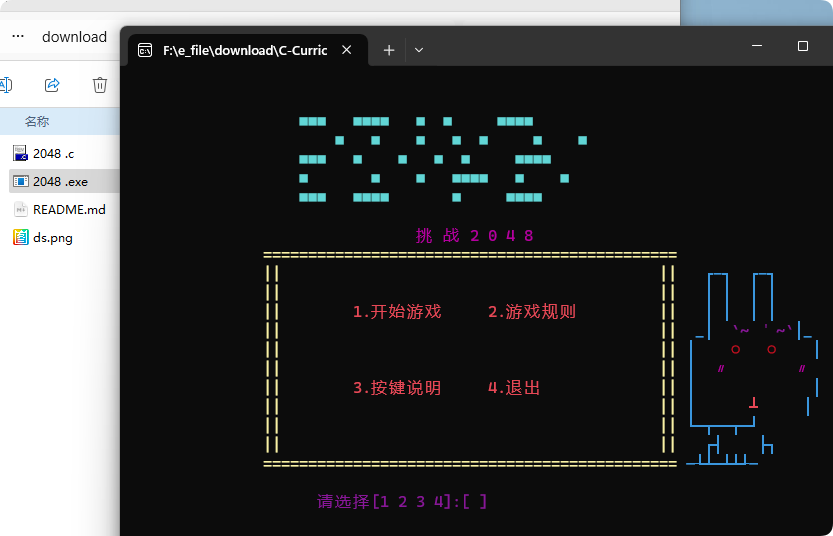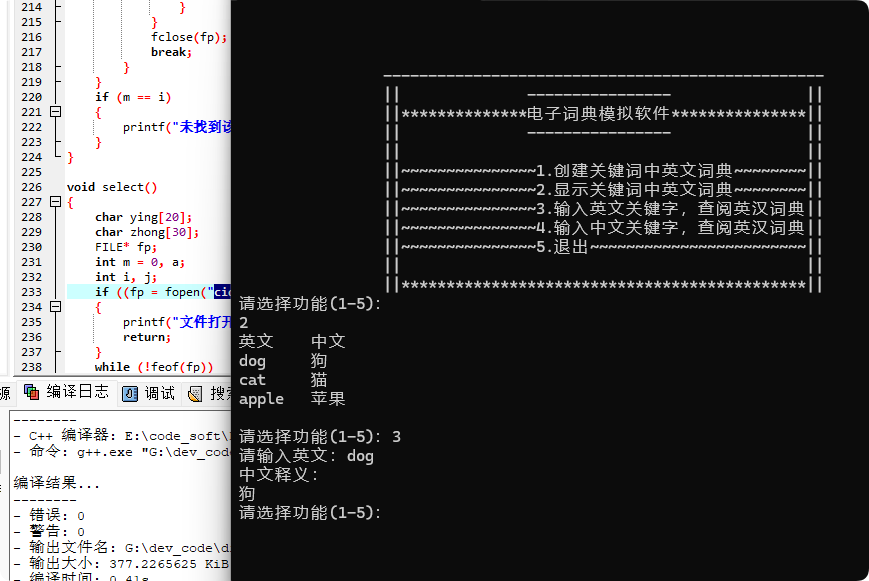题目描述
分支限界法求迷宫问题,走迷宫得出最短路径,迷宫自己设置一个n×m的矩阵,输入n,m和迷宫初态,输出最短路径,若无解就输出no way
案例代码
下面是一个用 C 语言实现的简单案例,使用分支限界法求解迷宫问题,找到最短路径。在这个示例中,我们假设迷宫中 0 表示可以通过的路径,1 表示墙壁。
#include <stdio.h>
#include <stdlib.h>
#include <stdbool.h>
#define MAX_ROW 10
#define MAX_COL 10
typedef struct {
int row;
int col;
} Point;
typedef struct {
Point point;
int distance;
} QueueNode;
typedef struct {
QueueNode items[MAX_ROW * MAX_COL];
int front, rear;
} Queue;
Queue* createQueue() {
Queue* queue = (Queue*)malloc(sizeof(Queue));
queue->front = queue->rear = -1;
return queue;
}
bool isEmpty(Queue* queue) {
return queue->front == -1;
}
void enqueue(Queue* queue, QueueNode node) {
if (queue->rear == MAX_ROW * MAX_COL - 1) {
printf("Queue is full.\n");
exit(EXIT_FAILURE);
}
if (isEmpty(queue)) {
queue->front = 0;
}
queue->rear++;
queue->items[queue->rear] = node;
}
QueueNode dequeue(Queue* queue) {
if (isEmpty(queue)) {
printf("Queue is empty.\n");
exit(EXIT_FAILURE);
}
QueueNode node = queue->items[queue->front];
if (queue->front == queue->rear) {
queue->front = queue->rear = -1;
} else {
queue->front++;
}
return node;
}
bool isValid(int row, int col, int n, int m) {
return (row >= 0) && (row < n) && (col >= 0) && (col < m);
}
int shortestPath(int maze[MAX_ROW][MAX_COL], int n, int m, Point start, Point end) {
int dRow[] = {-1, 0, 0, 1};
int dCol[] = {0, -1, 1, 0};
Queue* queue = createQueue();
bool visited[MAX_ROW][MAX_COL] = {false};
QueueNode startNode = {start, 0};
enqueue(queue, startNode);
visited[start.row][start.col] = true;
while (!isEmpty(queue)) {
QueueNode currentNode = dequeue(queue);
Point currentPoint = currentNode.point;
int currentDistance = currentNode.distance;
if (currentPoint.row == end.row && currentPoint.col == end.col) {
return currentDistance;
}
for (int i = 0; i < 4; i++) {
int newRow = currentPoint.row + dRow[i];
int newCol = currentPoint.col + dCol[i];
if (isValid(newRow, newCol, n, m) && maze[newRow][newCol] == 0 && !visited[newRow][newCol]) {
QueueNode newNode = {{newRow, newCol}, currentDistance + 1};
enqueue(queue, newNode);
visited[newRow][newCol] = true;
}
}
}
return -1; // No path found
}
int main() {
int n, m;
printf("Enter number of rows and columns: ");
scanf("%d %d", &n, &m);
printf("Enter the maze:\n");
int maze[MAX_ROW][MAX_COL];
for (int i = 0; i < n; i++) {
for (int j = 0; j < m; j++) {
scanf("%d", &maze[i][j]);
}
}
Point start, end;
printf("Enter the starting position (row col): ");
scanf("%d %d", &start.row, &start.col);
printf("Enter the ending position (row col): ");
scanf("%d %d", &end.row, &end.col);
int distance = shortestPath(maze, n, m, start, end);
if (distance == -1) {
printf("No way.\n");
} else {
printf("Shortest path distance: %d\n", distance);
}
return 0;
}这个程序首先让用户输入迷宫的行数和列数,然后输入迷宫的初始状态,以及起点和终点的位置。程序使用了队列来进行广度优先搜索,找到起点到终点的最短路径。如果不存在路径,则输出 “No way.”。
© 版权声明
本站资源来自互联网收集,仅供用于学习和交流,请勿用于商业用途。如有侵权、不妥之处,请联系站长并出示版权证明以便删除。敬请谅解!
THE END













